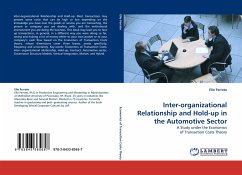The global automotive industry faces the most influential changes since the revolutionary introduction of mass production a century ago. Latecomer firms from Asia are challenging the western incumbents. They can change the rules of the game in the industry by leapfrogging several steps in their development process.
This study seeks to contribute to the discussion of latecomer firms by gaining insights into the catch up processes of five automotive companies in the passenger car segment, namely BYD (PRC), Chery (PRC), Geely (PRC), Tata Motors (India) and Mahindra & Mahindra (India). Based on learning theories and the core processes of car manufacturers, the author develops a catch up framework in order to compare automotive latecomers. The Korean manufacturer Hyundai serves as an example for a successful catch up, and provides a contextual framing for catch up processes in the automotive sector. An analysis of empirical data provides evidence for the evaluation of the catch up status of the five challenger firms. The author emphasizes the influence of institutional settings in China and India and the role of business groups that can act as facilitators for the catch up process. Finally, the study clusters the catch up strategies of the five observed companies in order to compare their approach.
This study seeks to contribute to the discussion of latecomer firms by gaining insights into the catch up processes of five automotive companies in the passenger car segment, namely BYD (PRC), Chery (PRC), Geely (PRC), Tata Motors (India) and Mahindra & Mahindra (India). Based on learning theories and the core processes of car manufacturers, the author develops a catch up framework in order to compare automotive latecomers. The Korean manufacturer Hyundai serves as an example for a successful catch up, and provides a contextual framing for catch up processes in the automotive sector. An analysis of empirical data provides evidence for the evaluation of the catch up status of the five challenger firms. The author emphasizes the influence of institutional settings in China and India and the role of business groups that can act as facilitators for the catch up process. Finally, the study clusters the catch up strategies of the five observed companies in order to compare their approach.








